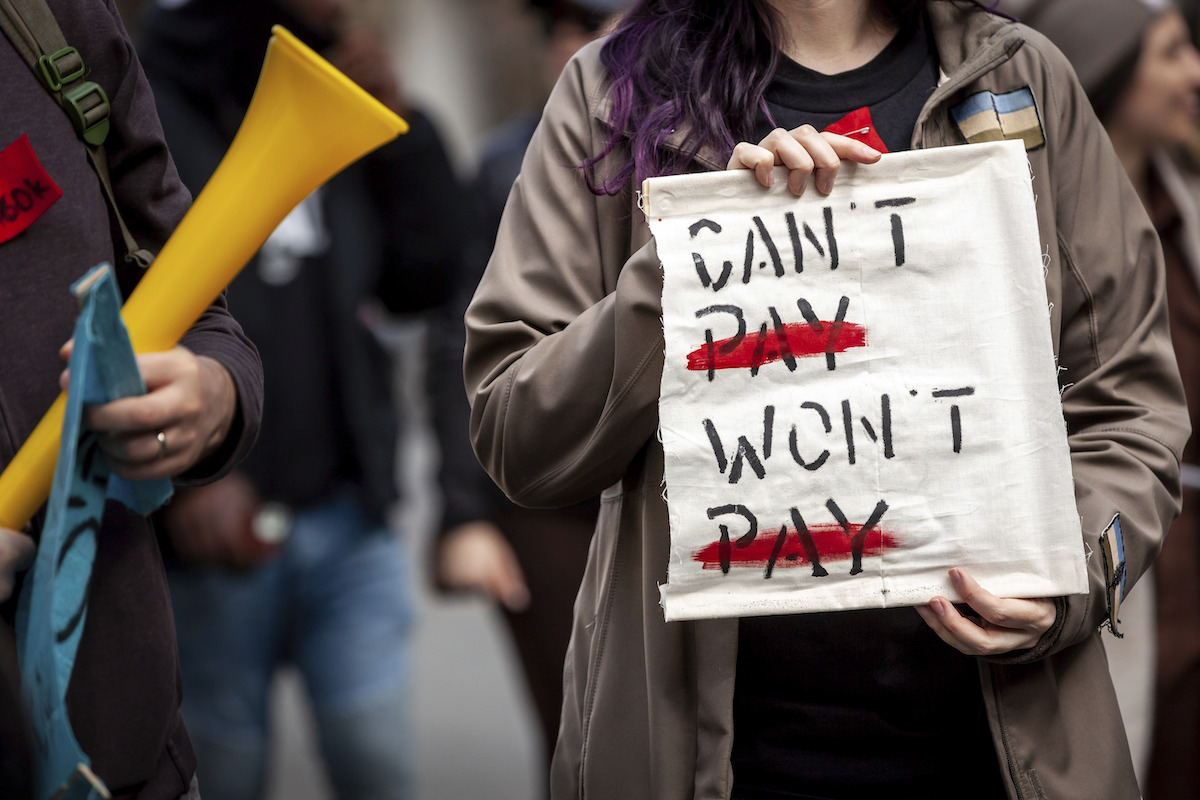The first iron law of economics is that we live in a world of scarcity. Because of this, economics puts constraints on our utopias. Rinse and repeat. This is how we discern between good and disastrous policies. Student-loan bailouts fall into the disastrous category. There are two arguments to be made here: the moral and the economic, and the moral is just as important, if not more so. After all, economics is the study of the pursuit of human flourishing.
First, let’s recap the situation. President Biden announced late last week a plan that will forgive up to $10,000 in personal student loan debt for individuals earning up to $125,000, or $250,000 for married couples who file tax returns jointly. And if your loans are in the form of Pell grants, up to $20,000 will be forgiven. The Biden plan will also continue the pause on federal student-loan repayments, instituted during the pandemic, through the end of this year. Additionally, the plan, in an attempt “to make the student loan system more manageable for current and future borrowers,” proposes an income-driven repayment plan. This caps monthly repayment plans for undergraduate loans at 5% of the borrower’s discretionary income—half the current rate.
The White House announced that this will cost $24 billion per year, depending on the participation rate, with a total cost of $240 billion. Private estimates tell a different story. According to a Penn Wharton analysis:
We estimate that debt cancellation alone will cost up to $519 billion, with about 74% of the benefit accruing to households making $88,000 or less. Loan forbearance will cost another $16 billion. The new income-driven repayment (IDR) program would cost another $70 billion, increasing the total plan cost to $605 billion under strict “static” assumptions. However, depending on the future IDR program details to be released and potential behavioral (i.e., “non-static”) changes, total plan costs could exceed $1 trillion.
We are talking anywhere between $240 billion and $1 trillion in added public costs. No big deal, especially considering that we are teetering on a recession, we’ve endured a global pandemic with catastrophic lockdowns and business closures, inflation is 8.5 percent, and we have $31 trillion in U.S. national debt, amounting to $244,000 owed per taxpayer. Moreover, Social Security and Medicare are on the brink of insolvency. So … what’s another trillion? (And by the way, you can forget any attempt to shrink the federal deficit.)
Again, we cannot make the economic argument without first making the moral argument, which is quite simple: You took out a loan, therefore you have a fiduciary responsibility to repay it. An institution vetted you for this loan, assessed that you were worthy of the risk, and in taking the loan you made a commitment. People cannot thrive and societies cannot grow in environments where you can renege on contracts without penalty. Moreover, you do not have to attend college to have a full life or to grow your income. Many top trade jobs bring six-figure incomes and require no college degree. Each person who makes this decision to attend college or not, to take a loan or not, engages in this cost-benefit analysis. Everyone who took out a loan knows they are expected to repay that loan.
In addition, what does this say to the suckers poor souls who saved up for college and didn’t take out loans to begin with? Or those who worked two, three jobs to pay them back? Or those who took out private loans, which are not included in this debt-relief scheme (which is limited strictly to federally backed loans)?
Here is where the economic argument emerges and coincides with the moral argument.
Remember our first iron law of economics? We live in a world of scarce resources. We have unlimited desires and limited means to satisfy those desires. The decision of whether to attend a four-year college must be ranked against the opportunity costs and the expected long-term benefits. Another way of thinking about this is to say there is no free lunch. College costs you both time and money. Using supply-and-demand curve analysis is helpful here. There is a downward-sloping demand curve for college attendance and an upward-sloping supply curve. The intersection of those two helps us to understand the current equilibrium quantity and price of college.
The bigger issue is that college does not represent what we would call a “free market.” There are many government interventions and subsidies in higher education. If we want college to become more accessible and better in quality, we need to think about increasing the supply. The White House’s simply “eliminating” debt doesn’t help increase the supply of high-quality and affordable higher education. It has the opposite effect. It will accelerate the decades-long trend of making college more expensive. The costs of higher education tuition and fees have increased 178% since 2000.
Moreover, debt cannot be “eliminated” with the wave of a president’s wand. The loan is still owed. Some have gone so far as to compare student loan forgiveness to the Year of Jubilee in Leviticus. This is nonsense. The biblical Jubilee was never about debt forgiveness—because the debt has already been paid! It’s a celebration of that very repayment. Biden may (although that’s being debated now) have the power to “wipe away” the debt, but the creditors are still owed.
The Biden plan introduces perverse incentives for several parties. Students now have the incentive to take on more college debt, with the assumption that it will be partially forgiven, the precedent having already been set. Colleges have an incentive to increase tuition and fees because the loan-forgiveness program distorts the overall cost calculus of the students. Over time, a college education will become even more out of reach for more Americans.
Don’t be fooled: Those debts will be repaid and American taxpayers are the ones who will foot the bill. Here we circle back to the moral argument. Why should the trade-school graduate pay for the upper-middle-class kid to attend law school? Under the IDR requirements, the biggest beneficiaries will be recent college graduates. So essentially you take out big loans, attend expensive schools, graduate, and get your first job—then promptly negotiate forgiveness and reduce your monthly burden of repayment (although you may get hit with a higher state tax bill!). The rigged system just became more rigged. It’s a highly regressive policy measure that will be financed by all taxpayers but, importantly, the 60% of Americans who did not attend college.
Rather than eliminating student debt, this program will transfer it to those who don’t owe it. It’s a political ploy, not a thoughtful strategy to help those manage their debt. It’s like putting a Band-Aid on a bullet wound. The problem is that higher ed has been getting more expensive for decades. We need to disentangle the government from higher ed, we need to celebrate vocation and trade jobs, and we need to stop pretending that the government can hand out free lunches. I promise you: Someone is paying for the bologna.

